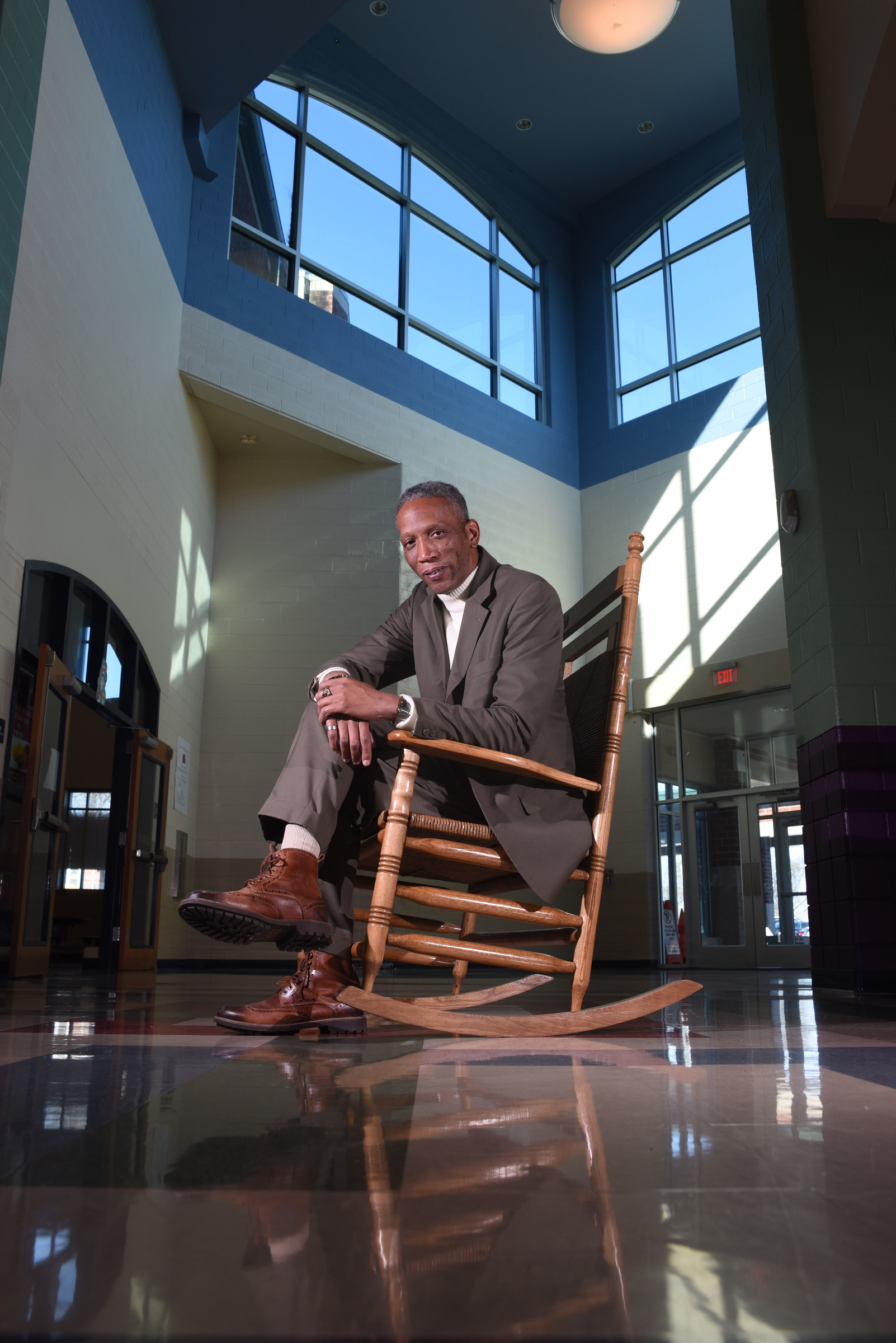More Info
What: Ed Johnson commemoration, marking the 111th anniversary of the Ed Johnson lynchingWhen: 2 p.m. SundayWhere: Walnut Street Bridge, near the 100th block of Walnut StreetFor more information or to donate to the memorial call Mariann Martin at 706-980-5824 or email mariann.martin@gmail.com
The Walnut Street Bridge, one of the longest pedestrian bridges in the world, exemplifies Chattanooga recreation for most residents, but for Hamilton County Commissioner Greg Beck, the site represents a place of cruelty and racism.
"I don't want to use it as a place of recreation," said Beck. "I use it as a memorial."
His words flowed with passion as he explained why he went nearly 17 years without stepping on the bridge that connects downtown Chattanooga with the North Shore.
He stopped walking there in 1999 when he learned the site was where Chattanooga resident Ed Johnson was lynched.
He walked across it again in 2016 after state Rep. JoAnne Favors, D-Chattanooga, helped to pass Tennessee House Joint Resolution 701, which recognized the tragedy that happened there more than a century ago.
Until then, "it seemed like nobody cared," he said during the 2016 ceremony.
Beck will stand among dozens of people at the Walnut Street Bridge Sunday for the Ed Johnson commemoration, marking the 111th anniversary of Johnson's lynching.
About two dozen people behind the "Ed Johnson Project" will host the event at 2 p.m. Sunday at the south end of the bridge, the end near the 100 block of Walnut Street.
Several expected attendees said they not only care about Ed Johnson's unjust lynching, but they are pursuing the preservation of his legacy.
"It's not just that a black man was lynched on the Walnut Street Bridge, it's all of the other pieces that happened as a result of it," said LaFrederick Thirkill, who started the Ed Johnson Scholarship Fund in 2006.
In 1906, Ed Johnson was a day laborer, a 24-year-old black man, accused of raping 21-year-old Nevada Taylor, a local white woman. He was convicted of the crime, even though she refused to swear he was the man who harmed her and nearly a dozen witnesses said instead of being with her, Johnson was with them at the time of the crime. Even though the U.S. Supreme Court gave Johnson a stay of execution, a mob that included local law enforcement officers lynched him on the Walnut Street Bridge.
Out of the 1906 trial came Noah Parden, who became the first African- American to argue as lead counsel before the United States Supreme Court. He worked on the case with Styles Hutchins, who was the first African-American to practice law in Georgia. Hutchins moved to Chattanooga in 1881 and became the first African-American to serve in the Tennessee state Legislature in 1886, according to news reports.
The Ed Johnson case marked the first time in history the Supreme Court gave a stay of execution, according to the book, "Contempt of Court" by former Chattanooga Times reporter Mark Curriden and the late attorney Leroy Phillips.
It was the first and only time that the Supreme Court held a criminal trial. It was a trial that ended with Chattanooga Sheriff Joseph F. Shipp being held in contempt of court. The court held Shipp accountable for not keeping Johnson safe after learning that some of Shipp's deputies had actually participated in the lynching. Justice Oliver Wendell Holmes called the Chattanooga criminal justice system "a shameful attempt at justice," according to The New York Times on Feb. 27, 2000.
Even black scholar W.E.B. Dubois weighed in on the case by personally calling Parden and recommending that he not present the case to the Supreme Court, said Thirkill. Dubois thought that Parden would not be accepted by the court because he was black.
Immediately following this case came the formation of the NAACP in 1909 and lynchings were greatly reduced. The case also generated for the first time a major demonstration by local African-Americans who impacted the Chattanooga economy by refusing to work in protest of the lynching, said Thirkill.
The Walnut Street Bridge, built from 1889 to 1891, has been the site of two lynchings - first Alfred Blount in 1893, then Johnson in 1906.
Mariann Martin, an Ed Johnson Project committee member, hopes the bridge becomes a place of racial reconciliation.
Martin, who is white, has been working with a host of other blacks and whites to raise $525,000. About $400,000 will be used for the memorial. About $100,000 will be used to complete an Ed Johnson documentary. And $25,000 will be used toward the Ed Johnson scholarship fund.
Mitch Patel, founder of Vision Hospitality Group Inc., and Ruth Holmberg, former publisher of The Chattanooga Times, are among several people who assisted the group in already accumulating $16,000.
The memorial will honor the life of Ed Johnson. It will also honor local attorneys Parden and Styles, who argued on Johnson's behalf.
"You don't have to worry about seeing a memorial that's graphic and disrespectful, that brings shame to our city" Thirkill said. "We want one that gives our city a sense of pride and an opportunity to have conversations. It will offer a time of reflection."
The Ed Johnson project wants to start raising more funds for the project in April. It's asking volunteers to host gatherings of people who will view a portion of the Ed Johnson documentary created by Linda Duvoisin and donations will be collected at the viewing.
The Community Foundation of Greater Chattanooga is overseeing the Ed Johnson scholarship and memorial donations.
Eric Atkins, Ed Johnson Project member, said he's already seeing signs of reconciliation among those working on the project. The first sign is that so many people of different economic and cultural backgrounds are moved by Johnson's story, Atkins said.
He said he didn't realize so many people where already doing their own studies on Johnson until last year, when dozens of people came to the 2016 Ed Johnson commemoration event.
Then the core group consisted of about 10 people, said Martin. It increased to about 25 after that program, she said.
Beck said he believes those working on the project will experience some reconciliation. But he said it will take more than ceremonies to change people's hearts.
Thirkill said not only could the Ed Johnson Project spur conversations about race relations, it could propel racial reconciliation in Chattanooga.
"If we are truly of the human race, then we have to respect each other's differences," he said. "We share more commonalities than differences. And the need for the conversation is to remind us of the commonalities that we share."
Contact staff writer Yolanda Putman at yputman@timesfreepress.com or (423) 757-6431.

